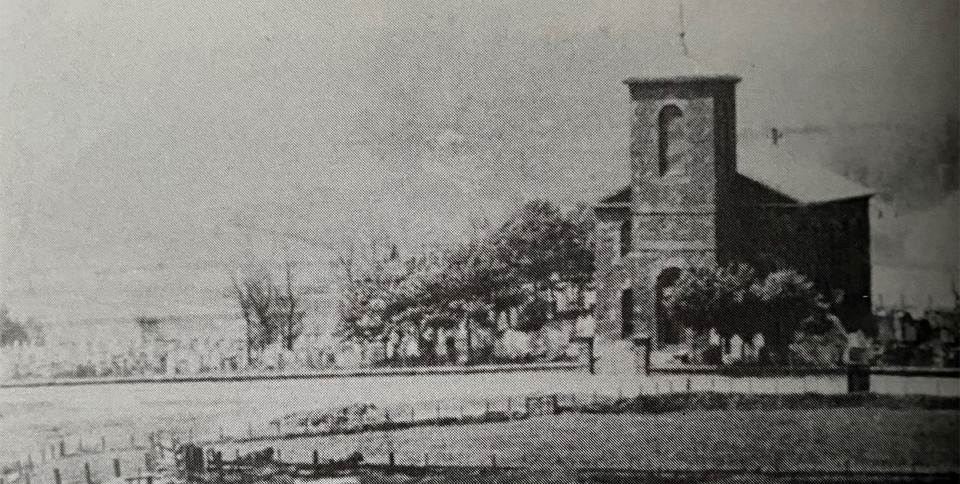St David's Church and the Bells of Rhymney



St David’s Church is a Grade 2 (star) church listed in 1990 as one of the most interesting Neoclassical buildings in south Wales and is undoubtedly one of the architectural highlights of Rhymney. Royal Assent was given on 14 May 1839 for ‘An Act to enable the Rhymney Iron Company to erect and endow a church in the Parish of Bedwellty in the County of Monmouth’.

Built using designs of Philip Hardwick of London, famous for railway architecture, the church was constructed in a strong, minimally classical yet elegant style with characteristic elements of typical Welsh parish churches. It is built of rock-faced large, squared blocks of local Pennant sandstone and is unusual in that it is in reversed orientation with its tower at its eastern end and sanctuary at the west.
It was consecrated as St. David’s Parish Church in 1843 when the visiting bishop was greeted at the church gate by clergy in canonical vestments, directors of Rhymney Iron Company, and thousands of people from neighbouring districts.
Reverend Lodwick Edwards was appointed by the Rhymney Iron Company to be its first vicar. He was a conscientious and powerful preacher he was renowned for his impressive services and huge congregations.
The belltower originally contained one bell which was presented to the church by the local company shop and brewery manager Andrew Buchan, who was its first churchwarden.
Buchan developed a strong friendship with the much-admired Canon William Evans who served as vicar of the church from 1856 until his death in 1900.Supported by the local community, Evans was responsible for the introduction of the hugely popular ‘Penny Readings’ in Rhymney in 1864. This form of entertainment comprising readings, singing and instrumental music were soon adopted too by non-conformist churches in the area and later taken on by the Rhymney Subscription Library.
Buchan is buried in the church vaults and is commemorated by a plaque in the nave. There is a stained-glass window dedicated to his wife, Sybella Buchan who died in 1856. There are number of wall monuments including four to the Buchan family by Reeves of Bath and Wood of Bristol, and another to Henry Valentine Trump JP, manager of the Rhymney Ironworks, of Rhymney House.

Buchan’s bells at the church were cast by John Warner and Sons, London in 1875 in Tenor B Flat. They consist of a complete ring of six, each inscribed with the maker’s name and date of manufacture. One bell has the additional inscription ‘In memoriam of Andrew Buchan who died on February 4th 1870’.
The bells were made famous by the ‘Bells of Rhymney’ verses found within the poem, Gwalia Deserta XV (Wasteland of Wales) by local poet Idris Davies. These follow the pattern of the childhood rhyme, Oranges and Lemons, and reflect the discontent felt by people towards the mining companies during the depression affecting the valleys.
Part of these were turned into a folk song by Pete Seeger in 1957. The song has since been performed amongst others by Bob Dylan, John Denver, Cher, Beck and, arguably most famously, by The Byrds in 1965.
The Bells of Rhymney
O-oh, what can you give me?
Say the sad bells of Rhymney.
Is there hope for the future?
Cry the brown bells of Merthyr.
Who made the mine owner?
Say the black bells of Rhondda.
And who robbed the miner?
Cry the grim bells of Blaina.
They will plunder willy-nilly,
Say the bells of Caerphilly.
They have fangs, they have teeth!
Shout the loud bells of Neath.
To the south things are sullen,
Say the pink bells of Brecon.
Even God is uneasy,
Say the moist bells of Swansea.
Put the vandals in court!
Cry the bells of Newport.
All would be well if, if if, if-
Say the green bells of Cardiff.
Why so worried, sisters, why?
Sing the silver bells of Wye.
O what can you give me
Say the sad bells of Rhymney.

The substantial impressive churchyard is worth a visit too with its fascinating gravestones as well as a fine space for nature and wildlife. The first person buried there was the daughter of the local Ironworks surgeon, Lewis Redwood whilst it also contains four commonwealth war graves.